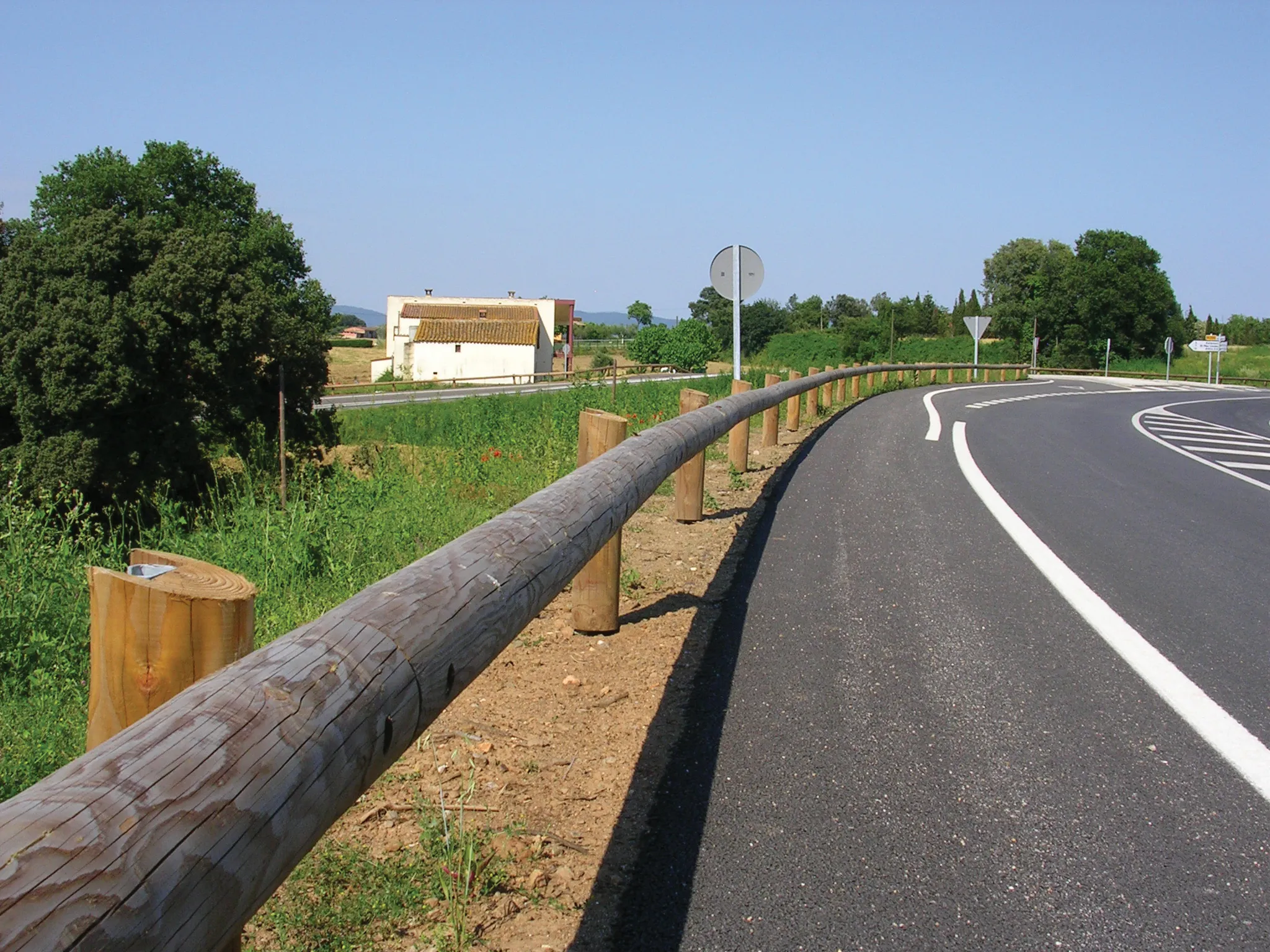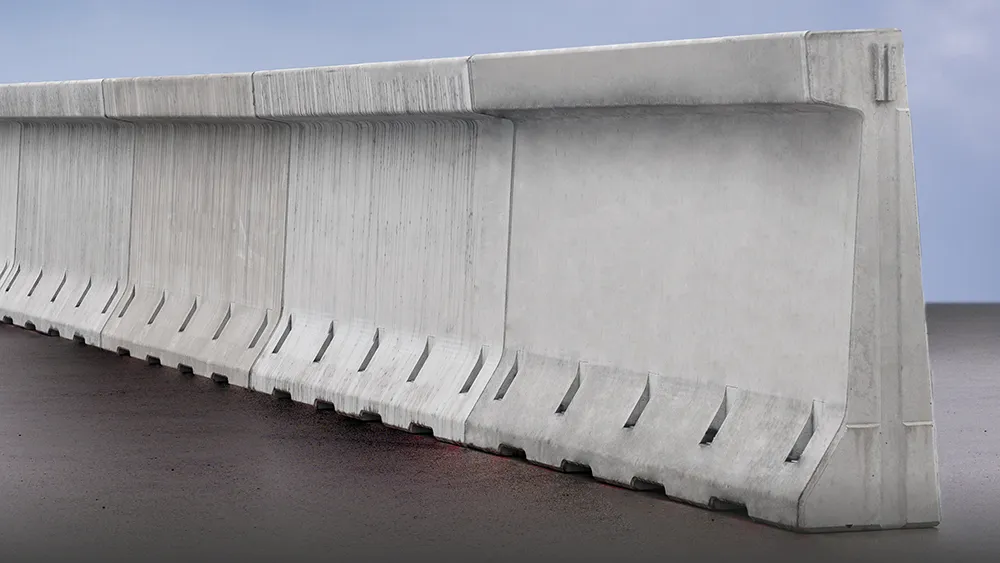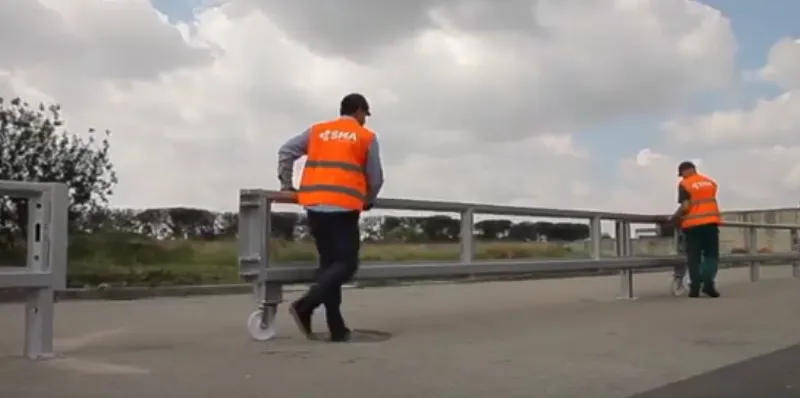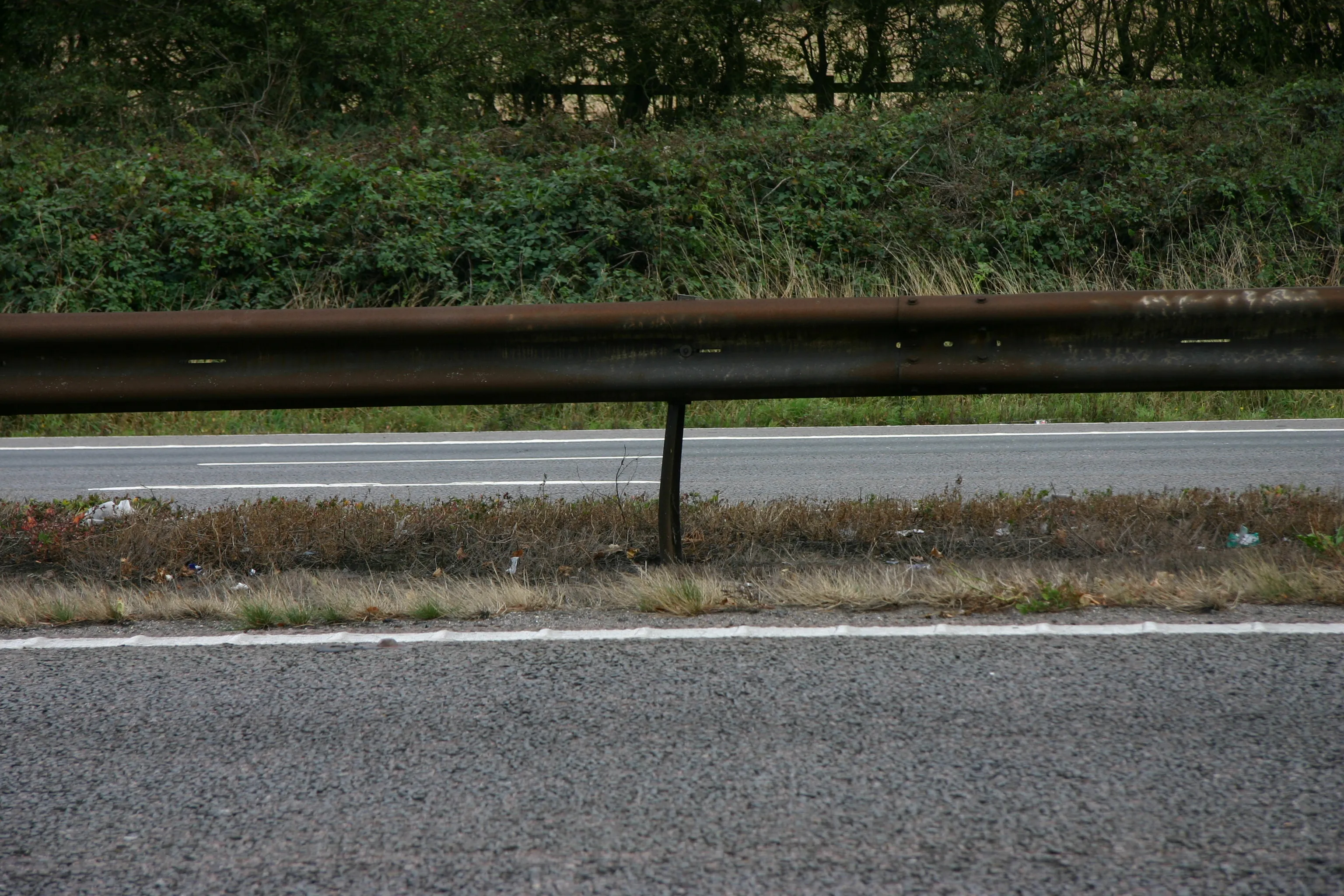Haitsma Beton in the Netherlands has developed a lightweight precast concrete barrier system for temporary use. This T3 system is said to make investing in vehicle guidance more cost-effective. Each HaiSafe T barrier weighs 1.5tonnes and is over 10% lighter than comparable precast concrete barriers. The system is said to be easy and quick to locate, as well as to to assemble and disassemble. A novel feature is that no anchoring is needed at the ends, because the system has been tested and approved without a
April 29, 2015
Read time: 2 mins
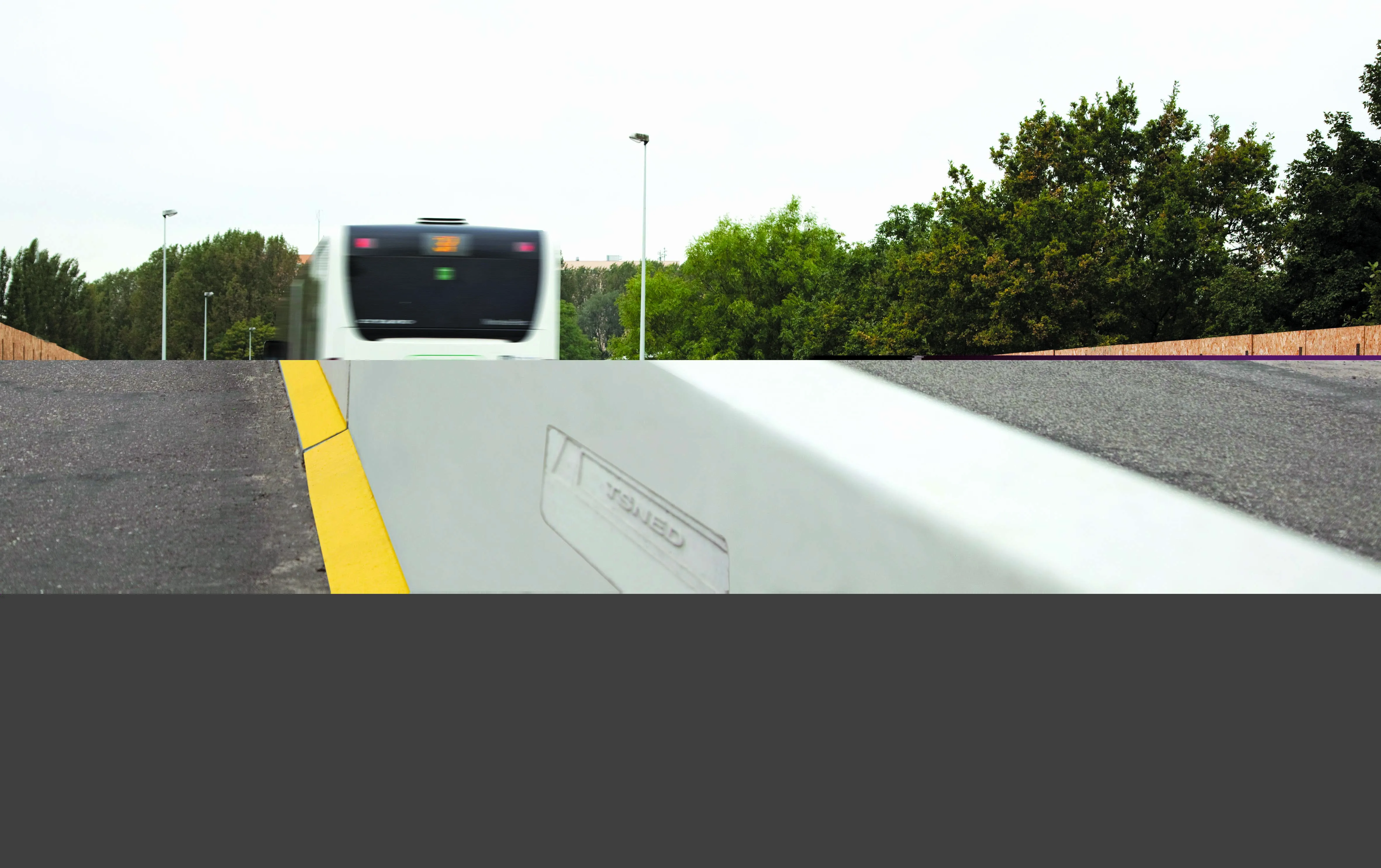
The system has been designed primarily for temporary situations where roadworks are underway. The system is 6m long and only 350mm wide. The low weight of 1.5tonnes means that fewer raw materials are needed while more elements can be delivered/load (up to 120m in one truck). Using the easily attached connections, the elements can be positioned quickly, assembled, disassembled and shifted, even after impact. Rubber strips on the underside prevent any damage to freshly laid asphalt and ensure good rainwater drainage. This also applies to the 3m long end elements also supplied by the firm.
The system features a maximum displacement of 360mm and has an extremely small operational width (W2), along with a favourable shock index (ASI A 0.33). The firm has restricted the height of the element, with the result that road users no longer experience obstacle fear and feel safer. In addition, each barrier has bevelled ends, so that a line of barriers can be put under tension following assembly to achieve the required rigidity. Reflectors can be attached using magnets or by other methods. Purchasers can also have logos incorporated to advertise themselves and discourage theft.
Haitsma Beton, along with the Directorate-General for Public Works and Water Management (Rijkswaterstaat) and Dutch Traffic Safety Research Foundation (SWOV) were involved in using precast concrete as a vehicle guidance system.


